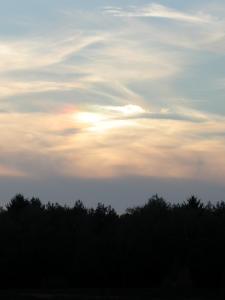Astronomy Picture of the Day: Lunation. “Our Moon’s appearance changes nightly. This time-lapse sequence shows what our Moon looks like during a
lunation, a complete lunar cycle.”
Category Archives: Physics
Useful links for physics
There were some links on MetaFilter recently that might be useful for physics lessons.
Flash Animations for Physics. “Animations and interactive demos available in many varieties, such as classical mechanics, nuclear, quantum, and relativistic. There’s even a nice explanation of the forces at work in Curling. And if that doesn’t wet your geek whistle, then take a peek at the patterns of Visual Math.”
Stellarium. “A free program which renders realistic skies in real time, and more. Handy for anyone who ever wrangled with one of these. And very cool to watch in fast forward.”
How to teach physics
New York Times: A conversation with Carl Wieman. Physics Laureate Hopes to Help Students Over the Science Blahs. “The Nobel laureate Carl E. Wieman may have won the highest honor in science, but he spends a big part of his life teaching physics to undergraduates at the University of Colorado.” By Claudia Dreifus.
Sun and moon halos and much more
 While looking for an explanation for sun dogs earlier today I discovered Eva Seidenfaden’s great collection of photos: “www.paraselene.de (deutsche Version) is a gallery of images with brief explanations dedicated to atmospheric optics and astrophotography”.
While looking for an explanation for sun dogs earlier today I discovered Eva Seidenfaden’s great collection of photos: “www.paraselene.de (deutsche Version) is a gallery of images with brief explanations dedicated to atmospheric optics and astrophotography”.
I have seen sun dogs before and knew that there were more halos, arcs and the like (Halos, Nebensonnen, Bögen etc.) but thought they were only, if ever, visible in Antarctica – this misconception might stem from the fact that I first saw photos of these phenomena at an exhibition called Arctica – Antarctica (Arktis – Antarktis) at the Bundeskunsthalle (Kunst- und Ausstellungshalle der BRD) in Bonn. In any case, Eva Seidenfaden has some exceptionally beautiful photos, and I urge you to browse her collection yourself!
Houston, we may have an omelette!
I shopped for a fun project I’m about to do at school today. I thought I’d linked to it last year when I did it for the first time, but apparently I didn’t. I give you: The Eggnaut – or “Houston, we may have an omelette!” Using only drinking straws, popsicle sticks, rubber bands, some string and masking tape, the kids have to build a landing vehicle that keeps a raw egg from cracking after dropped about three to five metres.
Last year I did this project with a bunch of fourteen-year-olds, and everybody had great fun. The students designed some very different landing vehicles, some using parachutes, some just padding the egg and hoping for the best. But apart from having fun the students learn a lot about aerodynamics, how to cushion the fall and how to be creative with few materials while working together in a group, which involves discussing and compromising on a solution.
Projects like this one are known as egg races, named after a UK TV show. See some examples: Creative Chemistry Egg Races.
Auf deutsch heißt das Projekt oder Egg Race, das ich durchführen werde, Der Eiernaut oder “Houston, es gibt Rührei!” Weitere Egg Races und Anregungen findet man auf der Egg Race-Seite der Erich-Kästner-Realschule; insbesondere sind einige nette Egg Races aus Physik und Technik dabei.
